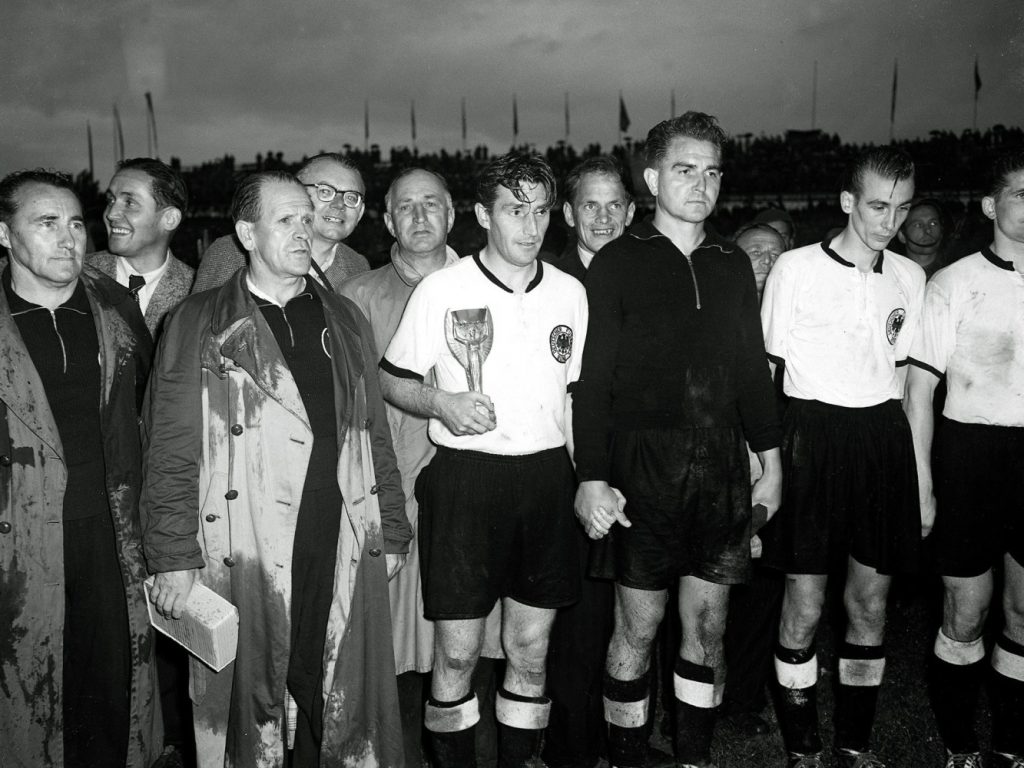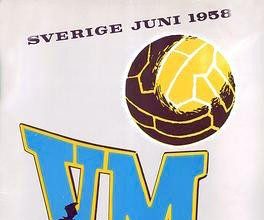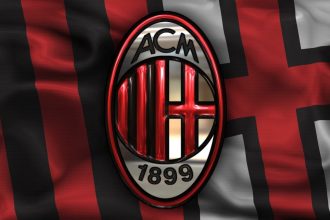The 1954 FIFA World Cup, held in Switzerland, is forever etched in football history as the tournament that produced one of the greatest underdog stories of all time. The competition showcased thrilling matches, memorable performances, and an unexpected triumph that captivated the world. Known as “The Miracle of Bern,” the 1954 World Cup left an indelible mark on the sport, redefining the power of determination and the unpredictability of football.
The journey to the 1954 World Cup was marked by post-war Europe’s rebuilding efforts. Sixteen nations, including football powerhouses such as Brazil, Argentina, and defending champions Uruguay, competed for the ultimate prize. The qualifying phase witnessed fierce battles, surprising upsets, and the emergence of talented teams ready to make their mark on the world stage.
The tournament itself was filled with unforgettable moments that would be forever etched in football folklore. From the breathtaking goals to the dramatic comebacks, each match brought a sense of anticipation and excitement. Legendary players like Ferenc Puskás, Josef Hügi, and Nándor Hidegkuti showcased their skills, captivating fans with their extraordinary performances.
List of qualified teams
Austria, Belgium, Brazil, Czechoslovakia, England, France, Hungary, Italy, South Korea, Mexico, Scotland, Switzerland (hosts), Turkey, Uruguay (1950 champions), West Germany, and Yugoslavia.
The 1954 tournament used a unique format. The sixteen qualifying teams were divided into four groups of four teams each. Each group contained two seeded teams and two unseeded teams. Only four matches were scheduled for each group, each pitting a seeded team against an unseeded team. This contrasts with the usual round-robin in which every team plays every other team: six matches in each group. Another oddity was that extra time, which in most tournaments is not employed at the group stage, was played in the group games if the score was level after 90 minutes, with the result being a draw if the scores were still level after 120 minutes.
Two points were awarded for a win and one for a draw. The two teams with the most points from each group progressed to the knockout stage. In the case of a tie between two teams for second place, the two tied teams competed in a play-off to decide which team would progress to the next stage, with extra time and drawing of lots if necessary. Had all four teams in a group been tied on points, there would have been two further play-offs – one play-off between the two seeded teams, and the other between the two unseeded teams, again with extra time and drawing of lots if necessary – with the winner of each play-off progressing to the quarter-finals. Two of the four groups ended up requiring play-offs – one between Switzerland and Italy, and the other between Turkey and West Germany. In each match, the unseeded team (Switzerland and West Germany) repeated an earlier victory against the seeded team (Italy and Turkey) to progress. The fact that two group matches were played twice, while other group opponents never faced each other at all, attracted criticism; newly elected FIFA President Rodolphe Seeldrayers declared that this group format would be abandoned in future world cups.

West Germany, who had been reinstated as full FIFA members in 1950 and were unseeded, convincingly won the first of two encounters with the seeded Turkish side at Wankdorf Stadium in Berne. The South Koreans, the other unseeded team, lost 7–0 and 9–0, with West Germany being denied the chance to play such an easy opponent. Sepp Herberger, the West German coach, gambled against the seeded team of Hungary by sending in a reserve side, and lost 8–3; so they had to play off against Turkey, a match that West Germany easily won.
Hungary’s team captain Ferenc Puskás, considered by many as the best player in the world at that time, was injured by West German defender Werner Liebrich and had to miss Hungary’s next two matches. Puskás played for Hungary in the final, despite still being in a questionable condition.
In the quarter-finals, the favorites Hungary beat Brazil 4–2 in one of the most violent matches in football history, which became infamous as the Battle of Berne. Meanwhile, the World Cup holders Uruguay sent England out of the tournament, also by 4–2. West Germany dispatched Yugoslavia 2–0, and Austria beat the host nation Switzerland in the game that saw the most goals in any World Cup match, 7–5. In the first semi-final, West Germany beat Austria 6–1.
The other semi-final, one of the most exciting games of the tournament, saw Hungary go into the second half leading Uruguay 1–0, only for the game to be taken to extra time with a score after 90 minutes of 2–2. The deadlock was broken by Sándor Kocsis with two late goals to take Hungary through to the final, with Uruguay finally losing their unbeaten record in World Cup Final matches. Uruguay then went on to be beaten for a second time as Austria secured third place.
The Hungarian national team, known as the Mighty Magyars, entered the tournament as the favorites. Led by the prolific Puskás, they were considered unbeatable, having defeated England 6-3 at Wembley Stadium the previous year. The Magyars demonstrated their attacking prowess and tactical brilliance, sweeping aside their opponents in the group stage with an incredible display of fluid football.


However, the final itself would provide an unexpected twist to the tournament. In a match that would go down in history, West Germany faced Hungary in a battle that transcended football. Against all odds, the West Germans unleashed a remarkable comeback, overturning Hungary’s early lead to secure a stunning 3-2 victory. Helmut Rahn’s winning goal in the dying minutes sealed their triumph, leading to jubilant scenes of celebration.
The 1954 World Cup left an enduring legacy, shaping the future of football. It marked the rise of West German football as a force to be reckoned with, providing a foundation for their subsequent successes. The tournament showcased the importance of teamwork, resilience, and the belief that anything is possible in a beautiful game.
The 1954 FIFA World Cup will forever be remembered as a momentous event in football history. For the first time, there was television coverage, and special coins were issued to mark the event. From the surprises and upsets to the heroic performances and the crowning of an unexpected champion, the tournament embodied the essence of the sport. The Miracle of Bern serves as a reminder that in football, as in life, dreams can come true, and underdogs can rise to greatness.





